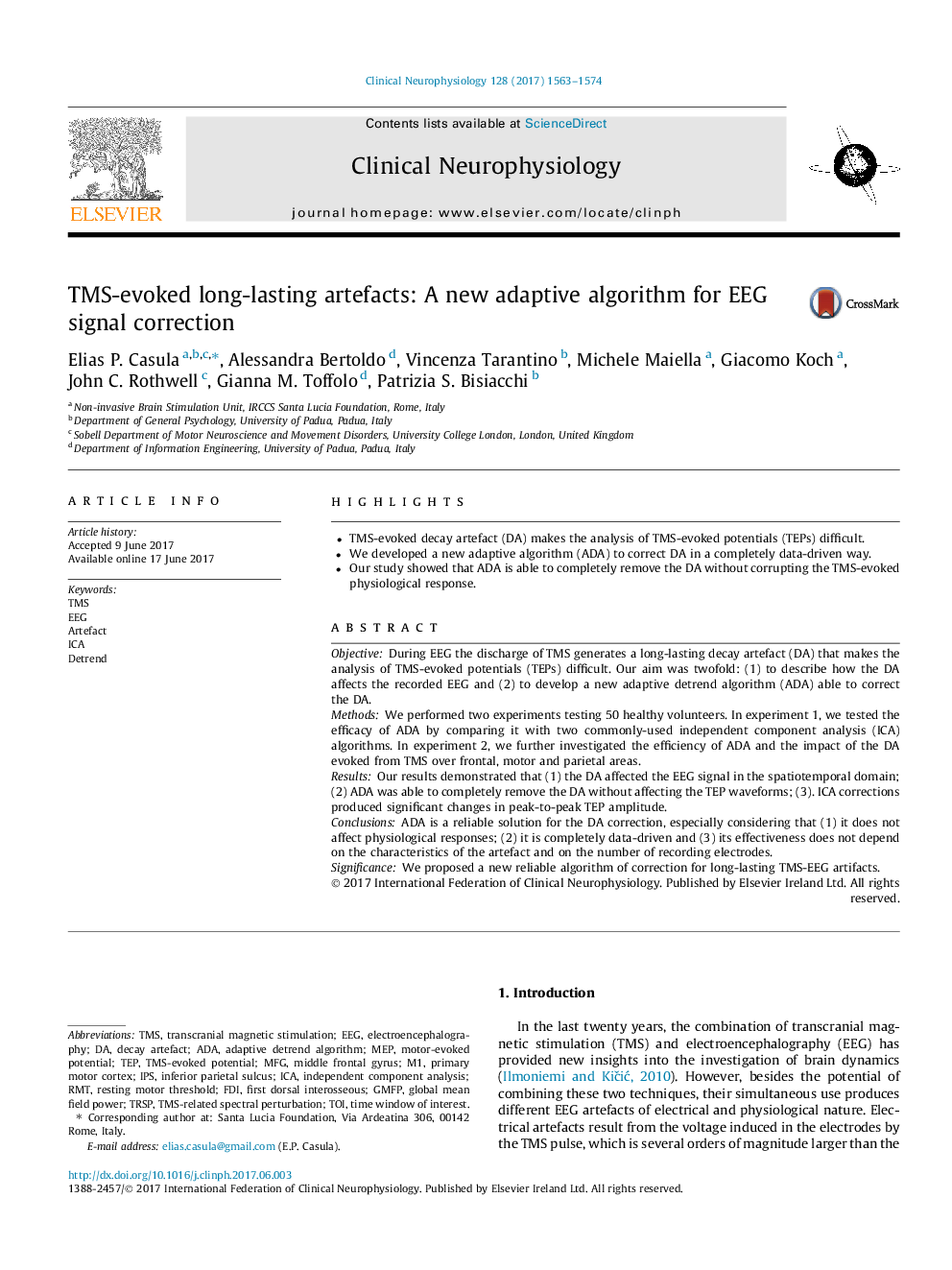| Article ID | Journal | Published Year | Pages | File Type |
|---|---|---|---|---|
| 5627249 | Clinical Neurophysiology | 2017 | 12 Pages |
â¢TMS-evoked decay artefact (DA) makes the analysis of TMS-evoked potentials (TEPs) difficult.â¢We developed a new adaptive algorithm (ADA) to correct DA in a completely data-driven way.â¢Our study showed that ADA is able to completely remove the DA without corrupting the TMS-evoked physiological response.
ObjectiveDuring EEG the discharge of TMS generates a long-lasting decay artefact (DA) that makes the analysis of TMS-evoked potentials (TEPs) difficult. Our aim was twofold: (1) to describe how the DA affects the recorded EEG and (2) to develop a new adaptive detrend algorithm (ADA) able to correct the DA.MethodsWe performed two experiments testing 50 healthy volunteers. In experiment 1, we tested the efficacy of ADA by comparing it with two commonly-used independent component analysis (ICA) algorithms. In experiment 2, we further investigated the efficiency of ADA and the impact of the DA evoked from TMS over frontal, motor and parietal areas.ResultsOur results demonstrated that (1) the DA affected the EEG signal in the spatiotemporal domain; (2) ADA was able to completely remove the DA without affecting the TEP waveforms; (3). ICA corrections produced significant changes in peak-to-peak TEP amplitude.ConclusionsADA is a reliable solution for the DA correction, especially considering that (1) it does not affect physiological responses; (2) it is completely data-driven and (3) its effectiveness does not depend on the characteristics of the artefact and on the number of recording electrodes.SignificanceWe proposed a new reliable algorithm of correction for long-lasting TMS-EEG artifacts.
